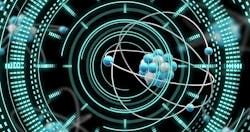Autonomous technologies that transform robotic processes
Intelligent systems like physics-informed artificial intelligence (AI) and digital twins embed physical laws directly into machine learning models, propelling them beyond conventional and more rigid control schematics.
Machine Design takes an in-depth look at a case study that explores the convergence of physics-informed AI and digital twin technology in this article.
The integration of physical laws allows robotic machinery to predict and adjust to new materials or part geometries without exhaustive reprogramming. In robotic surface finishing, for instance, force/torque sensors, real-time vision systems and embedded material models enable robots to autonomously adapt their behavior based on sensor feedback and physics constraints.
As a result, engineers no longer need massive failure datasets to tune systems; instead, machines leverage embedded physics to generalize performance and refine predictions in real time.
Learn more in the full article from Machine Design, a Control Design partner publication.

